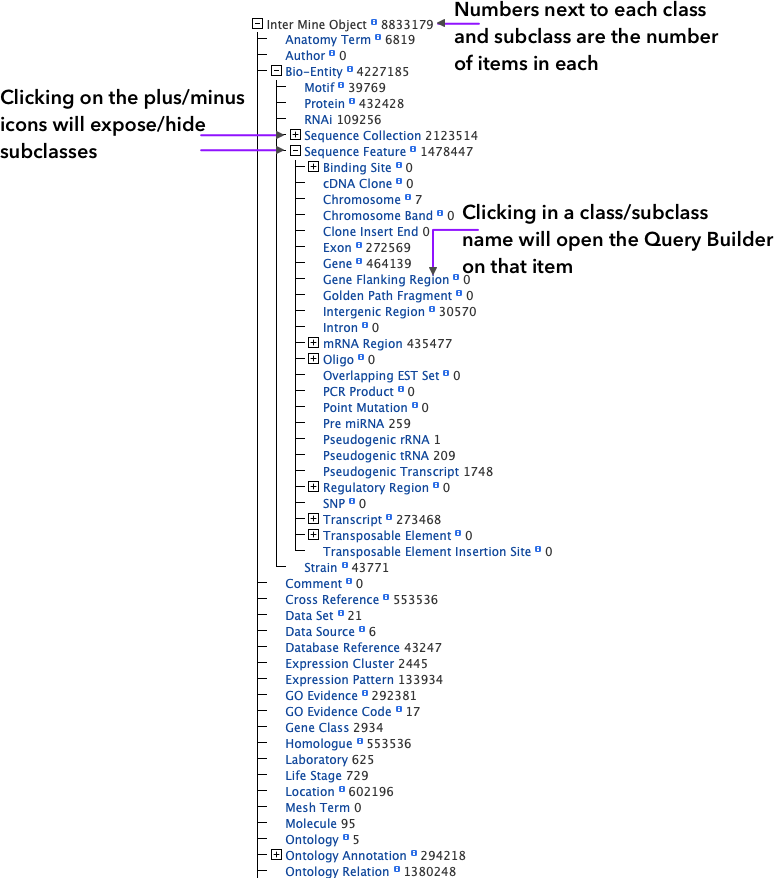Difference between revisions of "Data Model"
m (→Data Model) |
|||
| (2 intermediate revisions by one other user not shown) | |||
| Line 1: | Line 1: | ||
| − | == Data | + | == Data Model == |
| + | |||
| + | The WormMine Data Model is the main backbone of the data organization in the WormMine database. WormMine is built by a combination of different data sources (GFF3, FASTA, AceDB dumps, etc.) that are loaded and organized in different tables. At the moment of building the database, InterMine code takes information from guiding files that indicate relationships between the different data types and items, at the same time that items with identical IDs are merged in the same table row. While the tables are being created, InterMine starts creating joins and other tables that follow the elements’ relationships. This complex and intricate network of items and their classes form the structure of the main data model. | ||
| − | |||
[[File:model_1.png]] | [[File:model_1.png]] | ||
| + | |||
| + | |||
| + | |||
| + | The Data Model display is quite dry, but gives a good perspective on all the classes and subclasses included in WormMine and the number of elements contained in each. Bio-Entity is the largest class available and it covers most of the gene/protein related items. Clicking on the plus/minus signs will expose or hide the subclasses. Numbers next to each name are the number of items contained in the class/subclass. | ||
| + | |||
| + | |||
| + | |||
| + | [[File:model_2.png]] | ||
| + | |||
| + | |||
| + | Clicking on the class/subclass name will open the ''QueryBuilder'' on that particular class. | ||
Latest revision as of 03:18, 13 November 2018
Data Model
The WormMine Data Model is the main backbone of the data organization in the WormMine database. WormMine is built by a combination of different data sources (GFF3, FASTA, AceDB dumps, etc.) that are loaded and organized in different tables. At the moment of building the database, InterMine code takes information from guiding files that indicate relationships between the different data types and items, at the same time that items with identical IDs are merged in the same table row. While the tables are being created, InterMine starts creating joins and other tables that follow the elements’ relationships. This complex and intricate network of items and their classes form the structure of the main data model.
The Data Model display is quite dry, but gives a good perspective on all the classes and subclasses included in WormMine and the number of elements contained in each. Bio-Entity is the largest class available and it covers most of the gene/protein related items. Clicking on the plus/minus signs will expose or hide the subclasses. Numbers next to each name are the number of items contained in the class/subclass.
Clicking on the class/subclass name will open the QueryBuilder on that particular class.

